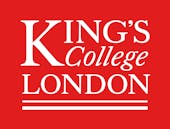Matteo is an emerging academic in Forensic Chemistry. He studied at the prominent School of Criminal Justice of the University of Lausanne (Switzerland), where he first received his BSc and MSc degrees in Forensic Science, both with First Class final awards and, later, his PhD degree in Chemical Criminalistics, with a thesis on the use of volatile gunshot residue for the estimation of the time since discharge of spent firearm casings.
After his PhD, Matteo obtained a prestigious research fellowship from the Swiss National Science Foundation to carry out a project at King's College London, focused on modernising current technologies in the analysis and profiling of inorganic explosive residues. He is now currently Lecturer in Forensic Chemistry at King`s College London (King's Forensics group), where he is leading globally recognised research in the analysis of chemical evidence and its use for investigative purposes, with an emphasis on gunshot and explosive residues.
Despite being still early on in his career, Matteo has published many papers in highly-ranked forensic and analytical journals. For his outstanding academic performance and high quality of research, he received two excellence awards, including a Faculty Prize in recognition of the contribution of his PhD thesis. He is a member of the Royal Society of Chemistry and the Chartered Society of Forensic Science, and also sits on the editorial board for a number of analytical and forensic journals. In particular, he is Assistant Editor for Forensic Science International and Associate Editor for Science & Justice.
Experience
-
2022–presentAssistant Professor, King's College London
-
2018–2022Assistant Professor, Northumbria University (UK)
-
2016–2017Post-Doctoral Fellow, King's College London (UK)
-
2010–2015Graduate Teaching & Research Assistant, University of Lausanne (Switzerland)
-
2014–2014Part-Time Research Fellow, University of Lausanne (Switzerland)
-
2010–2010Visiting Researcher, Arma dei Carabinieri (Italy)
Education
-
2016University of Lausanne (Switzerland), PhD in Forensic Science
-
2010University of Lausanne (Switzerland), MSc in Forensic Science
-
2008University of Lausanne (Switzerland), BSc (Hons) in Forensic Science
Publications
-
2021Ion beam analysis (IBA) and instrumental neutron activation analysis (INAA) for forensic characterisation of authentic Viagra® and of sildenafil-based illegal products, Talanta
-
2020Estimation of the time since last discharge of firearms and spent ammunition elements: state of art and perspectives, Forensic Science International
-
2020A study on contactless airborne transfer of textile fibres between different garments in small compact semi-enclosed spaces, Forensic Science International
-
2019Comparative assessment of a novel photo-anthropometric landmark-positioning approach for the analysis of facial structures on two-dimensional images, Journal of Forensic Sciences
-
2019Prediction of bioconcentration factors in fish and invertebrates using machine learning, Science of the Total Environment
-
2019Quantitative profile-profile relationship (QPPR) modelling: a novel machine learning approach to predict and associate chemical characteristics of unspent ammunition from gunshot residue (GSR), Analyst
-
2019Targeted and non-targeted forensic profiling of black powder substitutes and gunshot residue using gradient ion chromatography – high resolution mass spectrometry (IC-HRMS), Analytica Chimica Acta
-
2018Age estimation by assessment of pulp chamber volume: a Bayesian network for the evaluation of dental evidence, International Journal of Legal Medicine
-
2018Suspect screening of halogenated carboxylic acids in drinking water using ion chromatography – high resolution (Orbitrap) mass spectrometry (IC-HRMS), Talanta
-
2018DNA methylation-based age prediction using massively parallel sequencing data and multiple machine learning models, Forensic Science International: Genetics
-
2018Machine learning for environmental toxicology: a call for integration and innovation, Environmental Science & Technology
-
2017Time since discharge of 9 mm cartridges by headspace analysis, part 1: comprehensive optimisation and validation of a headspace sorptive extraction (HSSE) method, Forensic Science International
-
2017Time since discharge of 9 mm cartridges by headspace analysis, part 2: ageing study and estimation of the time since discharge using multivariate regression, Forensic Science International
-
2017Cartridge case and bullet comparison: examples of evaluative reporting, AFTE Journal
-
2016Probabilistic graphical models to deal with age estimation of living persons, International Journal of Legal Medicine
-
2016Commentary on: Chang et al., J Forensic Sci, 2015;60(4);869-877, Journal of Forensic Science
-
2015Commentary on: Gauriot et al., J Forensic Sci, 2013;58(5);1149-1155, Journal of Forensic Sciences
-
2015Characterization of volatile organic gunshot residues in fired handgun cartridges by headspace sorptive extraction, Analytical and Bioanalytical Chemistry
-
2014Development of a novel headspace sorptive extraction method to study the aging of volatile compounds in spent handgun cartridges, Analytical Chemistry
-
2013Estimating the time since discharge of spent cartridges: a logical approach for interpreting the evidence, Science & Justice
-
2011Differentiation of blue ballpoint pen inks by positive and negative LDI-MS, Forensic Science International
Grants and Contracts
-
2018Quantitative profile-profile relationship (QPPR) modelling: a novel approach to predicting ammunition characteristics from gunshot residue (GSR) and associating different specimens
- Role:
- Principal Investigator
- Funding Source:
- Swiss National Science Foundation
-
2016Analysis of explosives by ion chromatography coupled to high-resolution mass spectrometry (IC-HRMS)
- Role:
- Principal Investigator
- Funding Source:
- Swiss National Science Foundation
Professional Memberships
- The Chartered Society of Forensic Sciences
- The Royal Society of Chemistry
Research Areas
- Analytical Chemistry (0301)
- Forensic Chemistry (039902)
- Chemical Sciences (03)
- Applied Statistics (010401)
- Mathematical Sciences (01)
- Statistics (0104)
- Forensic Statistics (010403)
- Separation Science (030108)
- London
- Website
- @DrGalli85
- Article Feed
- ORCID
- Joined


